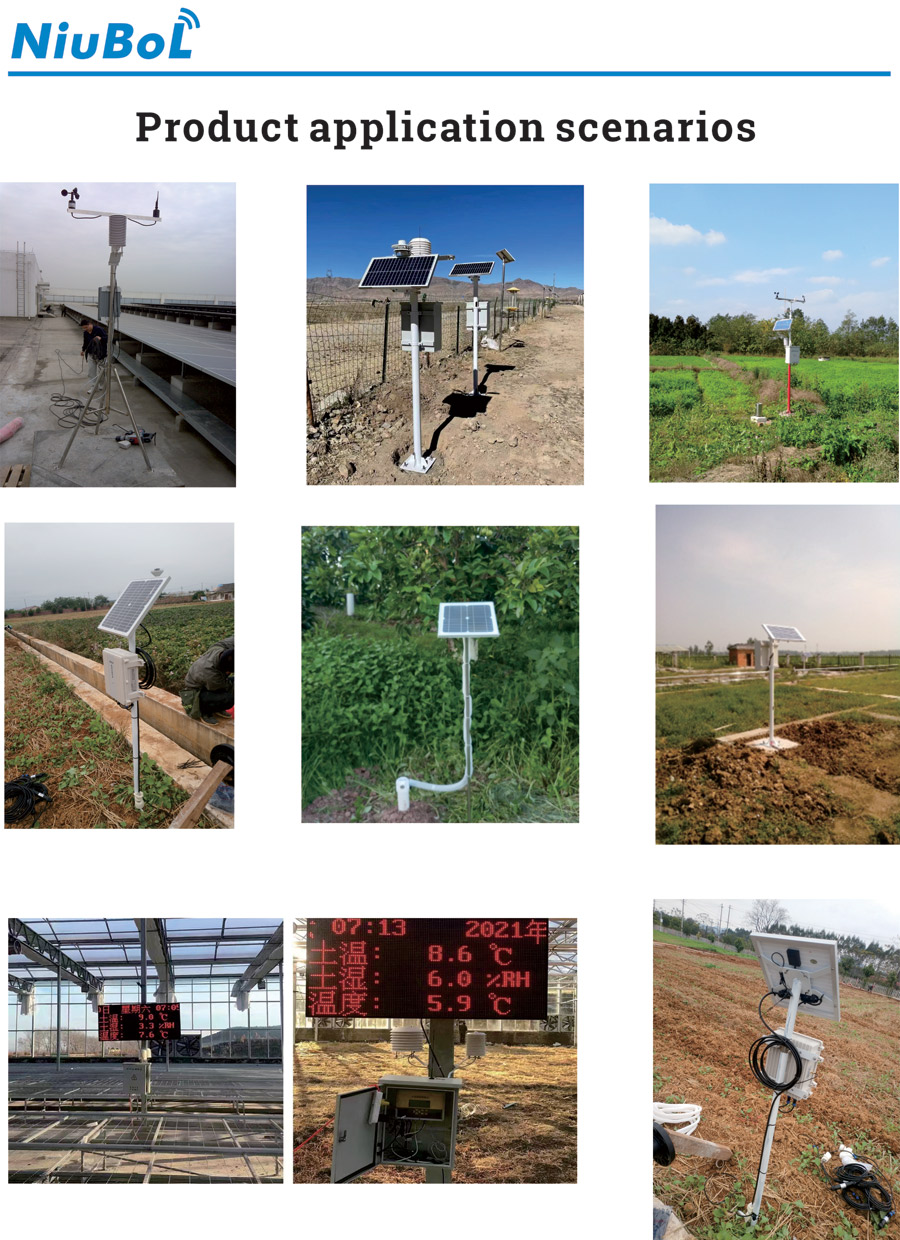

— Blogs —
—Products—
 Consumer hotline +8618073152920
Consumer hotline +8618073152920 WhatsApp:+8615367865107
Address:Room 102, District D, Houhu Industrial Park, Yuelu District, Changsha City, Hunan Province, China
Product knowledge
Time:2023-12-29 15:46:20 Popularity:670
An outdoor weather station is a device used to measure and record environmental conditions outdoors. It typically includes multiple sensors for measuring parameters such as temperature, humidity, wind speed and direction, rainfall, sunshine duration, and atmospheric pressure. These sensors are installed in a well-designed instrument box or tower to accurately measure weather data.
An outdoor weather station collects environmental data through sensors, which are then converted into digital signals. An internal processing unit within the station interprets and calculates the data. The collected data can be transmitted to a computer, cloud, or mobile device for users to view and analyze, either through a display screen or wireless connection.
The main purpose of an outdoor weather station is to provide accurate and real-time weather data to help people understand current weather conditions and trends. They are widely used in agriculture, meteorology, environmental monitoring, scientific research, and personal households. People can utilize this data to make informed decisions, such as farmers determining optimal crop planting times based on weather data, or meteorologists using weather station data to predict weather changes and issue accurate forecasts.
In summary, an outdoor weather station is a device used to measure and record environmental conditions outdoors. It provides valuable weather data to help people better understand and adapt to current weather conditions.
Choosing a best outdoor weather station involves considering the following factors:
1. Clear purpose: First, determine the intended use of the weather station. Different purposes have different requirements for the station's performance. For example, environmental monitoring, agriculture, and scientific research require higher accuracy and stability, while simple weather forecasting may have lower accuracy requirements but higher durability and stability requirements.
2. Measured parameters: Determine the weather parameters you need to measure, such as temperature, humidity, wind speed and direction, rainfall, etc. Ensure that the weather station can provide the required measurement items.
3. Accuracy and stability: Accuracy and stability are important indicators of weather station performance. A weather station with high accuracy and stability can provide more accurate data, aiding in better understanding of weather conditions and predicting future changes. When choosing a weather station, pay attention to its accuracy and stability and compare differences between different products.
4. Appearance and size: Choose an appearance and size that suits the environment and space limitations. Some weather stations may be large and require consideration of whether there is enough space for placement. Additionally, the aesthetics of the appearance can affect its coordination with the surrounding environment.
5. Durability and reliability: Choose a weather station with good durability and waterproof performance, especially if you plan to place it outdoors for long-term use. Ensure it can operate reliably under various weather conditions.
6. Data transmission and storage: Consider how the weather station transmits and stores data. Some weather stations transmit data wirelessly to computers, clouds, or mobile devices, while others use wired connections. Ensure you can conveniently access and store the collected data.
7. Display and user interface: Check the weather station's display screen and user interface. A clear and readable display screen with a user-friendly interface provides convenient data viewing and operation.
8. Features and additional characteristics: Consider whether the weather station has additional features and characteristics, such as data storage, remote transmission, wind and rain resistance, etc. These features can enhance the practicality and reliability of the weather station.
9. Price and maintenance costs: Choose a weather station within your budget. Additionally, consider the maintenance costs and usability of the equipment. Some weather stations may require regular calibration and maintenance, so consider whether these costs are acceptable.
10. Brand and after-sales service: Choose well-known brands with best after-sales service. Prominent brands usually have better quality assurance and reputation, while good after-sales service ensures timely resolution of any issues encountered during use.

In conclusion, choosing a best outdoor weather station requires considering multiple factors, including purpose, measured parameters, accuracy and stability, appearance and size, features and additional characteristics, price and maintenance costs, brand and after-sales service. It is recommended to conduct thorough market research, compare the advantages and disadvantages of different products, and choose a device that suits your needs.
Finally, reading reviews and feedback from other users is also a helpful reference. Understanding their experiences and opinions on different brands and models of weather stations can assist in making a more informed decision.
Related recommendations
Sensors & Weather Stations Catalog
Agriculture Sensors and Weather Stations Catalog-NiuBoL.pdf
Weather Stations Catalog-NiuBoL.pdf
Related products
 Combined air temperature and relative humidity sensor
Combined air temperature and relative humidity sensor Soil Moisture Temperature sensor for irrigation
Soil Moisture Temperature sensor for irrigation Soil pH sensor RS485 soil Testing instrument soil ph meter for agriculture
Soil pH sensor RS485 soil Testing instrument soil ph meter for agriculture Wind Speed sensor Output Modbus/RS485/Analog/0-5V/4-20mA
Wind Speed sensor Output Modbus/RS485/Analog/0-5V/4-20mA Tipping bucket rain gauge for weather monitoring auto rainfall sensor RS485/Outdoor/stainless steel
Tipping bucket rain gauge for weather monitoring auto rainfall sensor RS485/Outdoor/stainless steel Pyranometer Solar Radiation Sensor 4-20mA/RS485
Pyranometer Solar Radiation Sensor 4-20mA/RS485
Screenshot, WhatsApp to identify the QR code
WhatsApp number:+8615367865107
(Click on WhatsApp to copy and add friends)